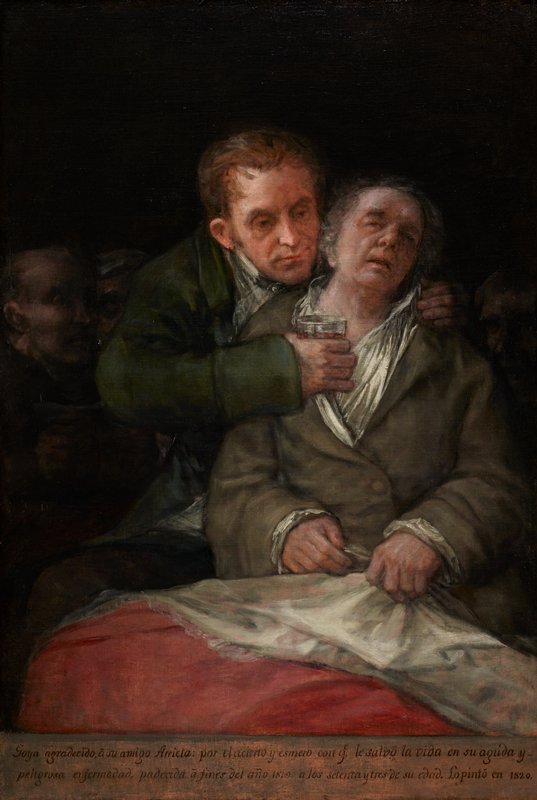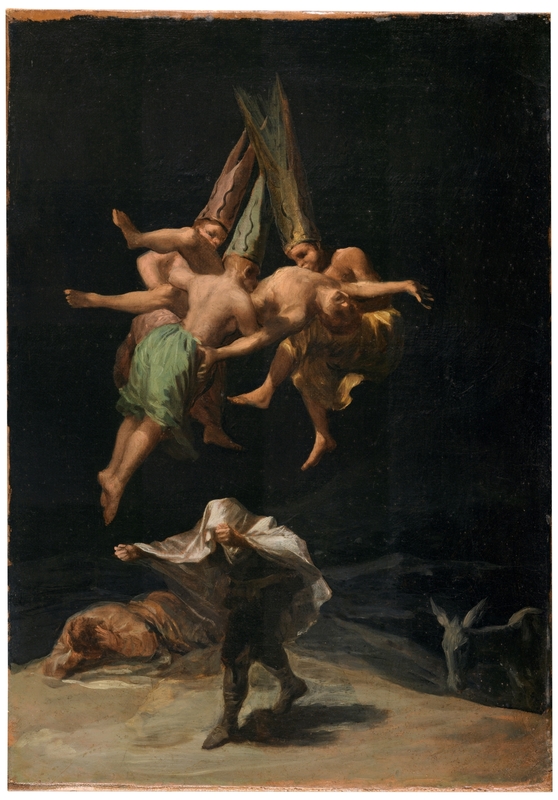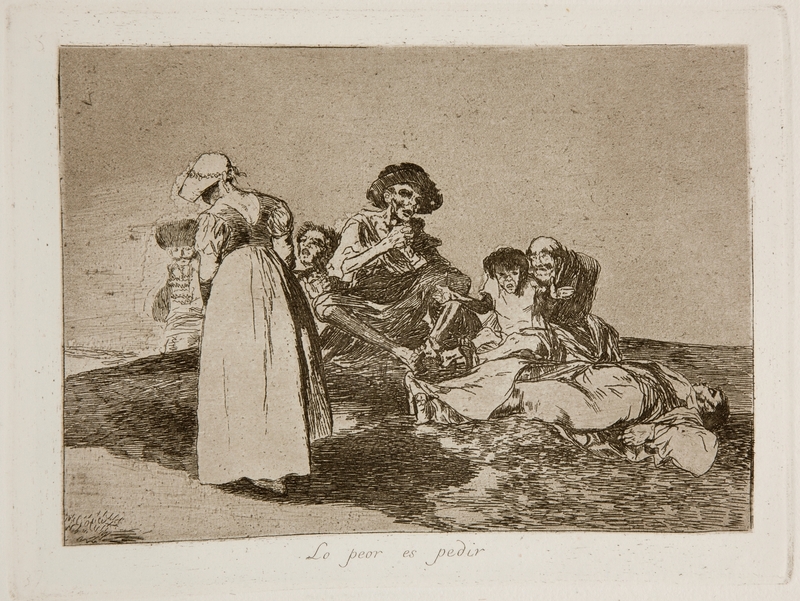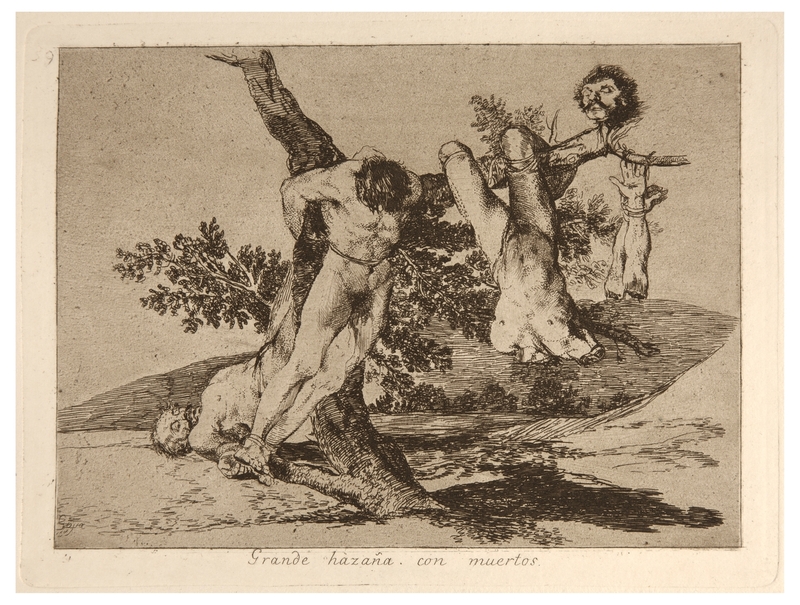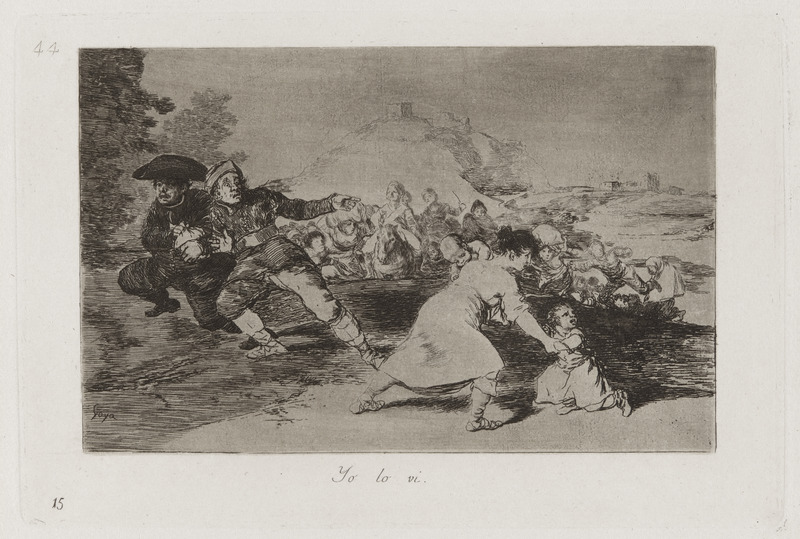observations
Overtime Francisco Goya began experimenting with his limitations on pleasurable subjects alone, in 1786 he created cartoons depicting the 4 seasons. The cycle ended with winter with a composition clearly affirming how awful life was in the winter for the rural population.
Goya's work was spread out into two different periods, the first being working for the royal family and proving his artistic value for profit while the second period showed to be more catered to expressive liberty. This period was when the signs of Goya’s mental illness and declining health started to show. Starting in 1792 Goya began to get extremely in and out of ill health,
“In November 1792, Goya became seriously ill in Seville; he began to suffer from headaches, dizziness, tinnitus, hearing loss, as well as problems with his sight, paresis in the right arm. This was followed by a state of depression together with hallucinations, delirium and gradual loss of weight” (Felisati and Sperati 2010, #1).
By Francisco’s return to Madrid during April of 1793 he was extremely deaf and would remain in this state of health for the rest of his life. Many attributes his ill health to the shift in Goya’s art style. This caused his art to become heavily influenced by the exploration of a more personal vision, causing Goya’s artwork to become dark and seditious.
The contents of his later works were more visually expressive with technique as well as the meanings behind the art. Goya continued to explore topics such as society, the human condition, politics, and the darker aspects of existence.
In 1798 Goya was commissioned by the Duchess of Osuna (1752-1834) a series of 6 paintings with themes and imagery focusing on the forbidden world of witchcraft and supernatural ideology. One painting from this series is titled “Witches Flight”.
The painting consists of three bare chested witches wearing dunce caps, they are holding a fourth nude figure. At the bottom a fifth character lies on the floor covering his ears, a sixth figure has his head covered with a white cloth, and to the right a donkey stands alone. Goya’s depictions of witches are very prevalent throughout his later works commenting on the role and stereotypes of women in society pushed by the church and inquisition, as an attempt to neutralize women’s power when it appears as a threat to the established order of a patriarchal society. Goya was addressing the position of women and female sexuality in late eighteenth-century Spain by using witches, celebrating instead of condemning the subversive role of the witch against the church. The figure located on the bottom with a cloth over his head, makes the gesture intended to protect him from the evil eye with his hand suggesting a sense of fear and evil being blocked by religious ideologies. To the far right the donkey represents the stupidity of this all, Goya was mocking society for falling for the beliefs pushed onto one another as a way of control by the church and patriarchy.
Political Climate
The political state of the world he was living was a driving force for his commentary artwork. In 1808 Napoleon Bonaparte (1769-1821)would invade Spain, and crown his own brother, Joseph Bonaparte (1768-1844) as king. Goya witnessed the violent subjugation of his countrymen by the French occupying troops. This affected Goya and his personal work deeply, showing darker and more emotional subject matter, in this case showing deep fear for Spain's future. In his 60’s, leaning more into social critique, Goya produced a series of etchings called "The Disasters of War". A series of 82 etchings that were more confrontational and ambiguous, he highlighted the acts of brutality during the Spanish war of independence.
This series can be separated into 3 groups
- His early works, the first group, call attention to the Napoleonic evasion such as “A Heroic Feat! With Dead Men!”
- The second group represented the mistreatment of the poor by the wealthy and the famine that followed, for example, “The Worst Is to Beg”
- The final part documents move in the direction of absolutism and satirize the church, in the etching “The Rope Is Breaking”
Goya's artwork was universal and had a deep level of understanding and compassion that denounces the abuse of power and violence. The etchings would not get published for another 35 years after Goya's death.


